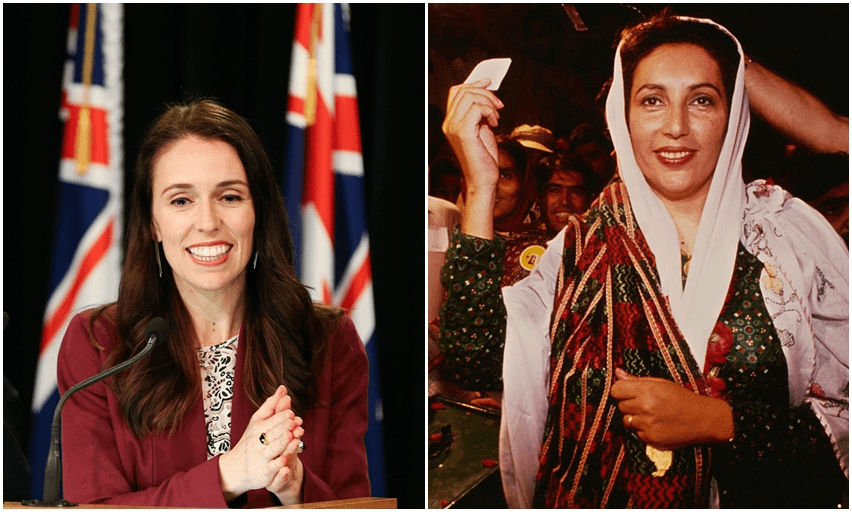A woman prime minister having a baby while in office? It’s already happened once, in Pakistan.
As the fervour ensues over Jacinda Ardern’s bombshell announcement, many have been asking: “How historic is this really?” We know it’s unusual – it’s not every day you have a female head of government, let alone one that’s three months preggers – but can Ardern’s situation be considered a worldwide political first?
While plenty of female royals from Queen Elizabeth II to Mary, Queen of Scots have given birth during their reigns, pregnant world leaders are obviously a foreign concept to modern democracies which have been largely dominated by men. But there’s a precedent to what we’re anticipating in New Zealand. In January 1990, Pakistan’s Benazir Bhutto became the first head of government to give birth while in office. Bakhtawar Bhutto Zardari, her eldest daughter and second child, was born just over a year after assuming office in December 1988. Her ascension to power was historic in itself, being not only the first woman elected prime minister of Pakistan but the first woman elected to head a Muslim country
At the time, Bhutto’s political opponents had been demanding an interim government be installed while she got on with having her baby. Bhutto, however, fiercely resisted as she was sure that her opponents would use it as an opportunity to oust her from power. Instead, she chose to keep the news that she had gone into labour under the radar, travelling incognito to a Karachi hospital to undergo a Caesarean. But news like that never keeps quiet for long: well-wishers soon gathered at the hospital, with her bodyguard even handing out traditional sweets as a sign of gratitude.
Ardern has indicated that she will take six weeks’ maternity leave, which may itself seem short. But Bhutto, almost immediately after undergoing the gruelling process of producing a real-life human, went back to work, her mind apparently fixed on political survival.
“The next day I was back on the job, reading government papers and signing government files,” she recalled afterwards. “Only later did I learn that I was the only head of government in recorded history actually to give birth while in office. It was a defining moment, especially for young women, proving that a woman could work and have a baby in the highest and most challenging leadership positions.”
While Bhutto’s first stint as prime minister came to an end just months after giving birth to her daughter, Bhutto went on to continue having babies and maintain a high profile career. In 1993, shortly after having her third child, Aseefa, she was elected as prime minister for the second time round. And her first child, Bilawal Bhutto Zardari, was born just months before her election at the end of 1988.
“There was a story that the elections had been timed to coincide when I was meant to be born,” Bilawal recalled back in 2014, who himself is now active in Pakistani politics. “[But] I was born early so we thwarted their plans.”
After being ousted from power again in 1996, Bhutto continued to stay active in politics for years to come until her assassination in 2007 while on the campaign trail. Bakhtawar, now 27 years old, has gone on to become a philanthropist in Pakistan, proudly describing herself on Twitter as the “1st child born to a sitting female Prime Minister”.
While much has changed for women in politics since Bhutto was in office in the 1990s, there’s no question Ardern will have her work cut out for her judging by the fact she was grilled about her plans for motherhood less than 24 hours into taking the Labour leadership last year. And while Ardern might not be the first head of government to be pregnant and give birth while in office, it’s likely she’ll be the first to do so out of wedlock. Welcome to 2018.
This section is made possible by Simplicity, the online nonprofit KiwiSaver plan that only charges members what it costs, nothing more. Simplicity is New Zealand’s fastest growing KiwiSaver scheme, saving its 10,500 plus investors more than $3.5 million annually. Simplicity donates 15% of management revenue to charity and has no investments in tobacco, nuclear weapons or landmines. It takes two minutes to join.





